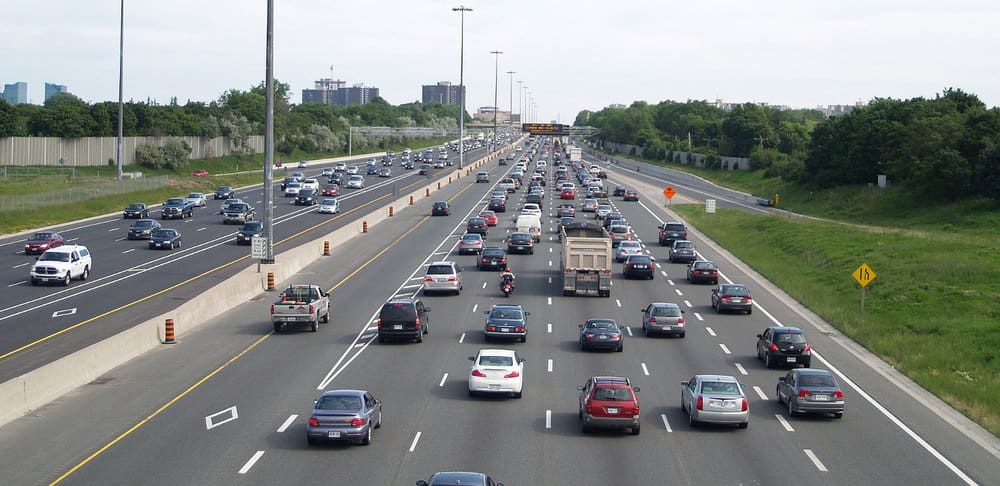
The upcoming total solar eclipse has the potential to disrupt travel routes across the country
One of the most under-reported yet most anticipated upcoming events in North America is the so-called Great American Eclipse on August 21. According to a report by Michael Zeiler of GreatAmericanEclipse.com, it will be like having 20 Woodstock festivals simultaneously across the United States.
Tourists and spectators flowing into the cities where the eclipse is expected to be best seen are likely to clog up roadways.
“There is a real danger during the two minutes of totality that traffic still on the road will pull over at unsafe locations with distracted drivers behind them,” Zeiler says.
For truck drivers and freight forwarders that usually take these routes to and from these cities, it looks like a possible “Carmageddon,” with main arteries turned into parking lots.
Dawn of the tourist-spectator
Zeiler provided an infographic estimating that if 12.25 million residents are located along what is dubbed as the path of totality (a 60- to 70-mile wide range across the country where the eclipse will be visible), the minimum number of “tourist-spectators” is expected to be about 1.85 million people. The maximum number of expected viewers is estimated at 7.4 million with South Carolina bearing the brunt of incoming eclipse tourists.
Zeiler also detailed the estimated number of hours when it comes to driving from a tourist-spectator’s destination to their chosen city along the path of totality. For example, vehicles coming from Montreal, Canada, and heading to South Carolina to watch the eclipse would face an estimated 16- to 18-hour drive time. It is almost the same amount of time spent by a truck driver coming from San Diego, CA, that is expected to deliver a package in Salem, OR.
It’s not quite July 4th travel traffic – when 44 million Americans travel the roads – but adding 7 million additional vehicles onto a busy Monday or Tuesday (Aug. 20-21) commute could lead to delays.
Total Eclipse of the Road
In terms of incoming traffic, how much mileage will this event encompass? On a clear day, the eclipse will be viewable “within a 60- to 70 mile-wide path” according to Zeiler. This path of space stretches from the state of Oregon to the state of South Carolina. The moment you see this mileage on the U.S. map, you realize the magnitude of traffic that commuters and spectators alike will generate.
If there are more spectators that camp on site in 48 hours before the eclipse than organizers expect, then package delivery delays could be possible.
With instructions given to most spectators to be on their preferred campsite within 48 hours before the eclipse, even the interstate highways that trucks usually traverse will be more heavily traveled around this time. Maybe “packed to the rafters” may not be the appropriate way to describe the anticipated crowd, but the expected crowd is large enough to potentially disrupt freight movement that week.
Lord of the Eclipse Rings
Roads that are usually the realm of truck drivers will be populated soon with campers and spectators who might not see another eclipse in their lifetime. These are roads dubbed in the same report by Zeiler as drivesheds in the path of totality. He defined the driveshed as sites “where cars can drive the quickest route to a destination.” Based on his estimates, the drivesheds are areas most likely to be the final destination for a given number of people traveling to see the eclipse.
For example, one of the expected drivesheds around the central part of the country is Highway 75. This is the third biggest driveshed, close to the city of Sabetha, KS. This is the closest driveshed for 27.8 million tourist-spectators. Another expected driveshed is found in along Interstate 15 close to the city of Idaho Falls, ID. This is the second biggest driveshed, with 35.8 million people closest to this driveshed.
The road with the biggest driveshed is Interstate 95. This is found at the easternmost part of the path of totality in Santee, SC, closest to 74.6 million Americans.
Not everyone along these paths will travel to see the eclipse, of course, but even a small number can add congestion to the highways. Zeiler estimates that between 0.5% and 2% of the population living within 200 miles of the path of totality will travel to see the eclipse.
Highway to Hell?
KGW.com in Oregon was among the first media outlets to report on the Great American Eclipse and its potential travel problems. The Oregon Department of Transportation (ODOT), through spokesperson Don Hamilton, has tried to prepare drivers for the worst. He didn’t mince words when he said that the eclipse on Aug. 21 will cause “the biggest traffic event in Oregon history.” The state even expects campsites to be formed from single-lane roads.
With people from Seattle rumored to be coming down to Salem, OR, as early as the wee hours of Monday morning, Hamilton added, “That’s going to complicate the morning commute in the city of Portland.”










